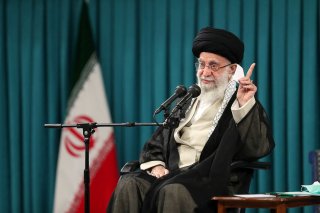Iranian Journalists Call for Release of Arrested Colleagues
Gripped by anti-government protests, the Iranian government has arrested Iranian journalists who covered the demonstrations, sometimes associating them with foreign governments.
More than 300 Iranian journalists published an open letter on Sunday calling for the release of their colleagues, who were arrested by the country’s security forces while covering the widespread anti-government protests over the past month.
The group’s statement, published in the reformist Etemad newspaper and other publications, accused the clerical government of Ayatollah Ali Khamenei of “stripping [journalists] of their civil rights” under Iranian law. It noted that those accused of participation in the protests—often characterized as riots or violent unrest by the government—had not been allowed to contact their lawyers and were “interrogated and charged before holding a public hearing.”
Iran’s protest movement has continued since September 16, when Mahsa Amini, a twenty-two-year-old Kurdish woman, died in a Tehran hospital three days after her arrest by the country’s religious police for failing to properly wear a headscarf. Eyewitnesses who were with Amini during her detention claimed that the police had beaten her, leading to popular anger and prompting widespread protests within her native Kurdistan province. Within days, however, the protests had spread across Iran, capitalizing on existing grievances toward the country’s religious police and clerical system of government. Women have formed the core of the protest movement and have filmed themselves dancing, burning their veils, and cutting their hair during the demonstrations—all acts that the clerical government has restricted since it came to power in 1979.
Although Iran has undergone repeated waves of protests over the past five years, most previous demonstrations have been aimed at solving particular problems such as electricity and water shortages. By contrast, both the protesters and the Iranian government have described the ongoing protest wave as an attempt to overthrow the Islamic Republic, prompting government officials to institute a near-total internet blackout and a violent crackdown on demonstrations. More than 250 Iranians have died during the clashes, and thousands of others have been arrested, with high-level judicial officials vowing to punish demonstrators severely. Iranian authorities have also cast blame for the demonstrations abroad, insisting that they were planned, funded, and organized in the United States, the United Kingdom, and Israel. At least forty Iranian journalists are known to have been arrested by security forces during the ongoing protests, and the government has directly accused two of them—Niloofar Hamedi and Elaheh Mohammedi, who covered Amini’s death and the first days of the protests—of working for the CIA.
Maj. Gen. Hossein Salami, the commanding officer of the Islamic Revolutionary Guard Corps (IRGC), proclaimed on Saturday that the demonstrations would end within a week, claiming that Saturday would be “the last day of the riots” and ordering Iranians to stay home. However, protests continued on Sunday and Monday.
Trevor Filseth is a current and foreign affairs writer for the National Interest.
Image: Reuters.

